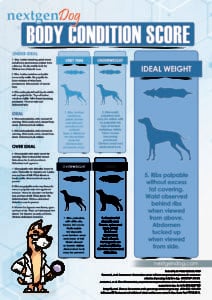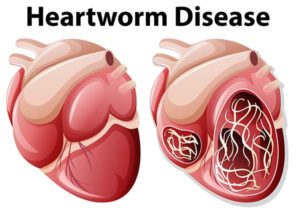Approximately 10% of dogs in the United States have some form of heart disease. Usually, it's a genetic disorder, more prevalent in some breeds. However, some things do affect the dog's heart, such as recent findings by the FDA how grain-free diets may do that. Many dog owners have no idea that their dog may be at risk. Those who do know about canine heart disease may not realize there are some things that can be done. So what are the ways to lower the risk of heart disease in dogs?
1. Proper Nutrition
The phrase “you are what you eat” goes for your dogs too. There are several components for canine heart health. These include:
- Taurine. Deficiencies of this amino acid have links to cardiomyopathy in dogs. Fish and meats provide this.
- Omega 3 essential fatty acids. These stabilize a dog's heart's muscle cells. Again, fish is a good source of it. Phytoplankton sprinkles added to your dog's food do the trick, and dogs love it. You can also supplement their diet with fish oil supplements.
- Vitamin A. Supports a healthy immune system, decreasing the chance of bacterial infections in the heart. Foods that include vitamin A are sweet potato or dark leafy greens, which you can include in homemade recipes or add to kibble.
- Vitamin C. An antioxidant that deters the chance of rapid heart rates and respiration as well as inflamed blood vessels. Broccoli and kale offer vitamin C; however, there's a lack of proper studies with canines on absorption of vitamin C.
- Vitamin E. Another antioxidant. Low levels of vitamin E have been found in dogs with severe heart disease. Kale comes to the rescue again along with broccoli and spinach, all of which can be added to home cooked meals for dogs.
Many owners by now know to always choose a commercial dog food brand where meat (or meat meal) is the first ingredient on the content list. Avoid those where the first ingredient is a grain, like corn which offers little in the way of vitamins and minerals.
You can also either switch to homemade diet (after consulting with a veterinarian), or mix homemade meals with kibble, as long as you know what you're doing. Here's a good homemade dog food recipe for heart health, and another one for heart failure, both of which you can discuss with your canine nutritionist if your pooch is at the risk of heart problems.
2. Sound Weight Management
Obesity is the antonym of a healthy heart in dogs. You want your pet at the ideal body weight, maintaining that as consistently as possible. Your veterinarian can provide you with guidelines as to what weight is healthy for your dog, but generally you can use the BCS chart (which is what vets use too).
He or she will also suggest dietary plans for managing that target goal. For the plump pup, this means cutting down on those treats, particularly fatty items from the human table.
3. Exercise
A healthy weight in your dog isn't the only fitness element. Exercise is important to your pet's heart health too. Walking, running, swimming – anything that gets their heart pumping blood is good. These cardio activities, even lower impact ones like walking, pump oxygen into your dog's heart, strengthening that muscle (with the dual benefit of keeping you healthier and at an optimal weight, too).
Other than “bathroom walks,” get your dog out for about 20-30 minutes of aerobic stimulation daily, whether through training or playtime. This supports your goal of sound weight management as well. If you notice your pup gaining weight, either exercise her more or double check the amount of food you provide daily for content and amount.
RELATED: Normal Heart Rate for Dogs – Important Things to Know
4. Good Dental Care
The connection between your dog's dental hygiene and heart health may not be immediately obvious, but it has been proven in many studies. What we know is that dogs with heart disease between the ages of 4 and 9 years illustrate a higher incidence of tartar, plaque and gum infections. The latter opens a pathway for germs flowing directly from there to your dog's heart and the rest of his body.
If you notice your pup having bleeding gums, excessive drooling or really bad breath, check with your vet about a dental care routine.
5. Heartworm Prevention
 Heartworm disease is completely preventable. Even so, about 13% of dogs in the United States contract this from biting insects, namely mosquitoes and fleas.
Heartworm disease is completely preventable. Even so, about 13% of dogs in the United States contract this from biting insects, namely mosquitoes and fleas.
There is a two pronged approach to heartworm prevention. First is giving your dog a prescribed pill once a month. Some of these medications also kill adult fleas and prevent roundworms and hookworms too, so you don't have to give many different pills but rather choose just the one.
Besides monthly chewables, heartworm medication comes in topical applications or as a shot that's given once every 6 months. Most dog owners find the chewables or topicals a much more pleasant approach to the whole matter.
Second would be treating your dog regularly with preparations that deter fleas and ticks, both adult and juvenile alike. Fleas live, on average, between 1 and 3 months. During that time the female can start laying as many as 50 eggs a day within 24 hours of her first meal. Within 36 hours those new fleas hatch and the cycle rolls forward geometrically. This is why experts recommend very careful monitoring not only your dog's fur, but your home. Stay on top of it to better protect your pooch from insect-born heartworms and other parasite-related illnesses.
6. Know About Your Dog's Breed
If your dog is a specific breed or even a combination of two, do your research. Certain breeds have a higher risk for heart disease, especially small canines like Pomeranians, Miniature Poodles, Dachshunds, Schnauzers and Cavalier and Cocker spaniels. There also are some larger breeds prone to heart issues too, like Golden Retreivers, Irish Wolfhounds, Dobermans, Boxers and Great Danes.
If you know from the outset that your pup's breed has risk factors, you can plan ahead and prepare using all the tips in this article and develop a plan with your veterinarian. For more information on your breed and potential illnesses, use a dog DNA test – these have become so accurate that even veterinarians use them for providing proper dog care.
7. Watching for the Signs
While observation won't lower the risk of heart disease in dogs, early warning signs mean that you can get your dog sound treatment before matters become critical. In this case, you are increasing the dog's quality of life from that point forward.
Warning signs of dog's heart disease for which to watch include:
- Long-term lack of energy
- Seeming to faint
- Reduced appetite
- Noticeable weight gain or loss without obvious cause
- Coughing frequently, or breathing problems
- Less playful, lethargic, depressed, just wanting to sleep.
When you spot these signs, consult with a professional to alleviate the possibility of a heart condition (or other related illness) and begin managing it.
8. On-Going Veterinary Check-ups
We all know that dogs age far more quickly than humans. That means they need more regular check-ups than people, and getting your pup on a regular schedule with your vet improves the chances of off-setting some of the risks for canine heart disease. And should your vet discover something, you have caught it early enough for making a treatment protocol that keeps your dog happy and comfortable for as long as possible.
READ NEXT: 4 Heart Problems in Dogs – Causes, Symptoms and Treatments













